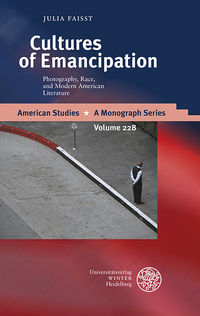
Cultures of Emancipation
Photography, Race, and Modern American Literature
1. Edition, 2012
247 Pages
ISBN: 978-3-8253-5970-6
Product: Book
Edition: Hardcover
Subject: Anglistik/Amerikanistik
Series: American Studies – A Monograph Series, Volume No.: 228
Available: 29.11.2012
Keywords:
amerikanische Kultur, U.S.A., Emanzipation, James, Henry, Photographie, Stein, Gertrude, afroamerikanische Literatur, Freiheitsbilder, Douglass, Frederick, Frederic, Harold, Kulturgeschichte der Moderne /U.S.A., Rassendiskurs, Gleichstellung, amerikanische Literatur
Emancipation, both in aesthetic and political terms, was the decisive aim of modernist authors in the United States. ‘Cultures of Emancipation’ investigates how black and white writers from the 1860s to 1945 (Frederick Douglass, Harold Frederic, Henry James, Gertrude Stein, Jean Toomer, and Charles Chesnutt) enlisted photography to set themselves free, politically and artistically. In the face of personal and historical crises such as Abolitionism and the Great Migration, they turned to photography to abolish slavery, obtain equal rights, and refashion themselves as writers of an era that would become dominated by images. Photography served as the thematic, structural, and conceptual fulcrum of modernist literature. Reading interdisciplinary modernism across the color line, this is the first study to place photography at the center of both black and white literary modernism. At the intersection of literary and visual studies, race studies, and cultural history, ‘Cultures of Emancipation’ shows how vital photography was to the rise and development of modernist literature as well as the aesthetics and politics of modern selfhood.
""
Astrid Böger in: Kritikon Litterarum, 42.3-4 (2015), 285ff




